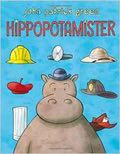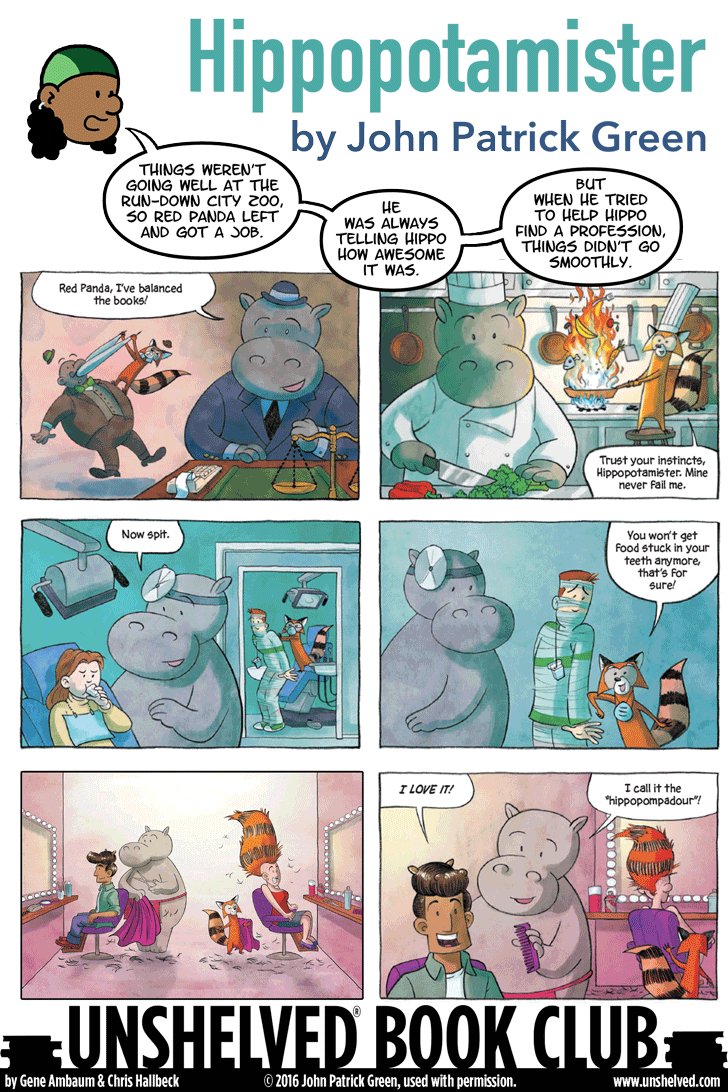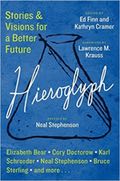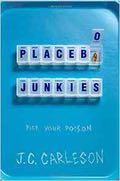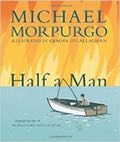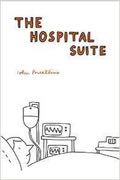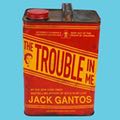Link to this review in the form of a comic strip by geneambaum tagged graphic novel
Link to this review by wally tagged anthology • science fiction • short stories
A collection of seventeen stories of a more or less positive future. (No dystopias allowed.) Many will appeal to geeks and engineers for their hard science. Neal Stephenson’s “Atmosphaera Incognita” follows two old friends, one a commercial real estate agent, the other a billionaire with a plan to build a twenty-kilometer tower in the desert. Buying usable land is easy enough for the agent, leaving the billionaire time to consider all the engineering challenges, although a massive lightning bolt surprises everyone. Some are outright utopian, like “Girl in Wave : Wave in Girl” by Kathleen Ann Goonan. In it a teen learns from her mentor how some neurological adaptations allowed people to overcome everything from dyslexia to illiteracy, freeing up humanity to leave behind all educational institutions and philosophies. But not all the stories are quite so optimistic. “Covenant” by Elizabeth Bear follows a person whose neurological-chemical treatments (and surgery) changed her from a remorseless convicted serial killer to a woman who only remembers what it was like to be that man. When she is kidnapped by the same kind of man she once was, she knows how he thinks and plans her escape, all while feeling something like remorse for the first time.
Why I picked it up: In a political climate that denies a lot of basic science, I was feeling a bit depressed until I saw this anthology. Neal Stephenson gave a talk at Arizona State University that asked why we don’t have any really big scientific/technological thinking these days, and challenged a number of writers to think big as a way of stimulating the doers. There’s a website devoted to talking about these stories as well as projects that might arise from them.
Why I finished it: The best stories had solid characters pushing against fear and ignorance. “Elephant Angels,” by Brenda Cooper follows a group of citizens as they use drones to stop poachers from killing elephants. When a beginner’s mistake allows a group to surprise the animals, she and her colleagues are able to track and recover the ivory as it makes its way to wealthy clients.
Includes stories by: Neal Stephenson, Kathleen Ann Goonan, Madeline Ashby, Cory Doctorow, Lee Konstantinou, Karl Schroeder, Annalee Newitz, Geoffrey A. Landis, James L. Cambias, Gregory Benford, Vandana Singh, Brenda Cooper, Elizabeth Bear, Rudy Rucker, David Brin, Charlie Jane Anders, and Bruce Sterling.
It’s perfect for: Daniel, who creates DIY and makerspace programs for his library. He would love Cory Doctorow’s “The Man Who Sold the Moon.” It follows a couple of friends as they create a solar sinter for use at a Burning Man show, and then try to make it so it will work on the moon, allowing future colonists to build their very own yurts out of the fused tiles.
Link to this review by diane tagged coming of age
Audie and her friends are professional guinea pigs. They get paid to test drugs and cosmetics for pharmaceutical companies. It’s not a bad life as long as you don’t mind being poked and prodded endlessly. After-effects including skin lesions, lethargy, digestive upsets, and psychosis. Audie’s best friend, Charlotte, and Audie’s terminally ill boyfriend, Dylan, keep her grounded and signing up for more experimentation.
Why I picked it up: How do new drugs get approved? What motivates people to do this? And I liked the ethical questions that were a big part of a story that could have been a typical YA romance/friendship.
Why I finished it: Told in alternating chapters between Audie’s first-person voice and articles from her online blog, a “how-to” primer on making money as a drug trial subject, she describes her experiences in vivid detail. I was caught up in the story of these kids trying to survive on the meager payouts they earn from the experiments. (Some are still teenagers with fake IDs, others are already in their twenties. All living on their own without family support or real jobs.) As she and her friends begin to exhibit more and more devastating reactions, the story takes a more serious turn, and I began to doubt Audie’s reliability. I had to finish and find out what was true and what was just her vivid imagination.
Readalikes: We Were Liars by E. Lockhart also features an unreliable narrator and a group of close-knit young adults. The events that occur at the family vacation home tie cousins together, and reveal shocking secrets that hint at mental illness. Both books stayed with me for a while.
Link to this review by robert tagged chapter book
As a child, Michael had vivid nightmares about Grandpa aboard a torpedoed ship, then floating in a burning sea and trying to hoist himself into a lifeboat. These nightmares always came before Grandpa’s rare visits. Grandpa seldom came from the Scilly Islands to London, where his daughter, her husband, and their son Michael lived. Michael’s parents constantly warn him not to stare at Grandpa, but he can’t help it because of Grandpa’s scarred face and ruined hands. (He has a total of three half-fingers between them.) Michael knows Grandpa was on a ship that was torpedoed during the Second World War, but his parents won’t tell him much beyond that.
Why I picked it up: The title was provocative. Who was half a man? How did he get that way?
Why I finished it: The answers to these and other questions came at an accelerating pace. First, the narrator reveals his childhood nightmares were fueled by what little his parents knew and shared about what happened to Grandpa. The next stage comes as Michael, about age twelve, travels to Grandpa’s cottage on Bryher, “a tiny island, with only about eighty people.” He becomes used to Grandpa’s silent ways and his love of reading books about the sea. Then one day Grandpa tells Michael the details he’s never told anyone else about the torpedoing, the rescue, the rehabilitation. Grandpa even tells Michael about the family estrangement, how his wife Annie left with Michael’s mother, and how Michael’s mother hasn’t spoken to Annie in twenty years. Grandpa doesn’t think that separation is right. His dying wish is to buried at sea with all his family there.
It’s perfect for: My mother. She’ll appreciate the way illustrator Gemma O’Callaghan’s simple illustrations, filled with large blocks of even colors, complement Morpurgo’s plain, descriptive writing style. Before I read Half a Man, I’m not sure I’d have imagined a vivid illustration of a sinking merchant ship, afire at sea, with men swimming away, beautifully rendered in only five colors.
Readalikes: Written as a novel for adults, Nicholas Monsarrat’s The Cruel Sea also features plain descriptive prose and it, too, is set during the convoy battles of the North Atlantic during the Second World War. One of Grandpa’s favorite writers is Arthur Ransome, and I’d recommend his We Didn’t Mean to Go to Sea, a youthful nautical misadventure.
Link to this review by geneambaum tagged biography • graphic novel
This book features three shorter autobiographical works by Porcellino about his debilitating health problems and his frustrations in seeking both traditional and alternative treatments. From agonizing stomach pain to abdominal surgery, severe hyperacusis to swelling ears, OCD to turning orange, Porcellino seeks to heal and comfort himself with meditation as well as medication, therapy, and dietary supplements, often with little success.
Why I picked it up: I fell in love with Porcellino’s minimalist cartooning style when I read his adaptation of Thoreau’s Walden.
Why I finished it: There’s a great sequence between pages eighty-three and ninety-one where Porcellino is put under with anesthesia for surgery, and then hallucinates a jabberwocky and a roadrunner as he’s coming out of it. It’s simple and brilliant. I liked the way he meditated on death, realizing that since he wasn’t afraid to be born, he shouldn’t be afraid to die. And Porcellino includes what is now my favorite Zen kōan.
I wouldn’t give it to: My friend Richard, who is a bit of a hypochondriac. I do think he’d enjoy it, as he often seeks alternative health treatments himself. But I’m afraid that reading about Porcellino’s health problems, some of which may have been caused by exposure to chemicals during his time as an insecticide sprayer, would lead Richard to have many of the same, unpleasant symptoms.
Link to this review by dawnrutherford tagged biography • coming of age • audiobook
In Hole in My Life, author Jack Gantos told about his troubled youth, when he went along with a drug smuggling scheme and ended up in prison. In this new memoir, he explores why he went from being an innocent kid to the sort who would make such bad decisions.
Why I picked it up: Listening to Hole in My Life was an important event for me — it was one of the first times that a book being read by the author made it even more honest and powerful.
Why I finished it: It was painful to see young Gantos transform from an innocent, brainy nerd to a kid heading down a dark path. Jack’s loneliness and lack of positive adult connections left him adrift and vulnerable to the terrible attentions of his delinquent next door neighbor. Under his influence, Gantos risked his life doing idiotic stunts (such as catapulting over a house into a swimming pool), burnt all his clothes, and shoplifted a new hoodlum wardrobe.
It’s perfect for: The teen staff at my library system. Most of us were pretty good kids who never fed that spark of trouble. Reading about Gantos will help them understand the “bad kids” better, and why they need all the more attention and compassion.
